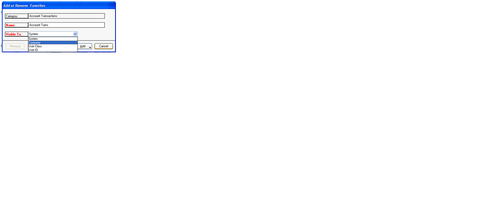In the recipe, Speeding up access to information with SmartList Favorites
earlier in this chapter, we looked at the benefits of saving SmartLists
as Favorites, along with how to make it happen. A key component of
saving a Favorite that is often overlooked is setting the visibility of
the Favorite.
The Visible To
field defines who has access to use and modify a particular SmartList
Favorite. As there are only a couple of options, it is sometimes
difficult to get the visibility right. For example, consider a user who
crafts a SmartList to meet their particular need but sets the visibility
to System
making the SmartList available to everyone. They could find that another
user has made changes and modified the Favorite by saving those
changes. Now our original user has to figure out how to put their
Favorite back together.
In this recipe, we'll look at how to set the visibility of a Favorite and how to determine the right visibility to set.
How to do it...
The process to set the visibility of a Favorite is as follows:
1. Click on the SmartList button on the menu bar at the top or select Microsoft Dynamics GP from the top and click on SmartList.
2. Select Financial, then Account Transactions.
3. Select Favorites and name the Favorite Account Trans:

4. Set the Visible To field to User Class and click on Add | Add Favorite.
How it works...
The Visible To property of a Favorite controls who has access to both run and modify a Favorite.
There are four options for setting visibility:
System: The Favorite is available to all users with access to this SmartList category across all Dynamics GP companies.
Company: The Favorite is available to all users with access to this SmartList category but only for the company it was created in.
User Class: The
Favorite is available to all users in the same user class as the
creator. With Dynamics GP 10 user classes are no longer connected to
user security so it's easier to redirect user classes for other uses
such as sharing Favorites. This works well for limiting access to a
small group of users.
User ID: The Favorite is only available to the user who created the SmartList.
Too many users default to selecting System every time. However, this exposes the Favorite to everyone with access to that SmartList category. In many cases, User Class
is the best option to select because it limits access to a much smaller
list and that list is most likely to be commonly shared. For critical
SmartLists, selecting User ID will ensure that no one else can change it.
There's more...
Visibility isn't the only
security control on SmartLists, but it is the most commonly used and the
only user-controllable option. In addition, there are some best
practices for naming Favorites.
SmartList security
Dynamics GP provides
security options for administrators to control access to SmartLists.
This only controls who can access a SmartList category, not individual
SmartList Favorites. For example, this controls which users have access
to payroll related SmartLists, but a user with access to the payroll
category would have access to all of the information in that SmartLists
category.
Favorite naming best practices
A best practice for naming
SmartLists is to include the user's initials at the beginning of the
name. This doesn't prevent another user from using or renaming this
Favorite, but it does remind users that they aren't the creators. It
also makes it easy to change the name when modifying a Favorite. Simply
change the initials to avoid overwriting the original favorite and click
on Modify.